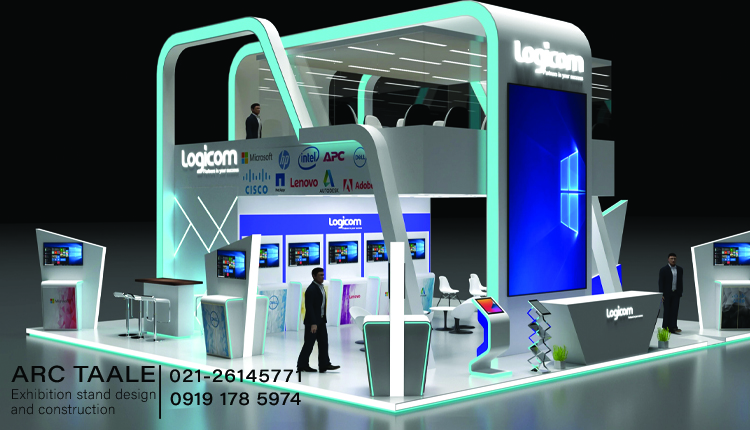Holding Exhibitions in Europe offers a gateway to a diverse market and a rich cultural landscape. Europe is renowned for its vibrant trade show and exhibition scene, with numerous cities hosting prestigious events throughout the year. Whether it’s the cosmopolitan cities of London, Paris, or Berlin, or the historical charm of Rome or Barcelona, each destination brings its unique allure and attracts a wide range of industries and attendees.
Holding Exhibitions in Europe
Holding Exhibitions in Europe requires meticulous planning, cultural understanding, and strategic execution. Here are essential tips to navigate the complexities and ensure your exhibition stands out in the diverse and competitive European market
Thorough Market Research
Research the local market trends, consumer behavior, and preferences specific to the European country where you plan to hold the exhibition. Understanding the market dynamics helps tailor your offerings to meet European demands effectively.
Select the Right Location
Choose a prime location for your exhibition venue. European cities like Paris, London, Frankfurt, and Milan are popular choices due to their excellent infrastructure, accessibility, and status as international business hubs. A central location enhances visibility and accessibility for attendees.
Cultural Sensitivity
Respect diverse cultures across European countries. Understand local customs, etiquette, and language preferences. Tailor your marketing materials, signage, and presentations to align with the cultural norms of the specific European audience you’re targeting.
Engage Local Partners
Collaborate with local businesses, suppliers, and event organizers. Local partners can provide valuable insights, assist with logistics, and enhance your exhibition’s credibility among the European audience.
Utilize Digital Marketing
Leverage digital marketing strategies to create buzz and attract attendees. Utilize social media platforms, email marketing, and online advertising to reach a wider European audience and generate interest in your exhibition.
Interactive Exhibits and Technology
Explanation Incorporate interactive exhibits, virtual reality experiences, and digital engagement tools. Europeans appreciate innovative and technology-driven displays. Interactive elements enhance visitor engagement and create memorable experiences.
Suggested article: Exhibition Stand Building in Armenia
Sustainable Practices
Embrace eco-friendly practices. Europeans prioritize sustainability, so incorporate recycled materials, energy-efficient lighting, and sustainable booth designs. Highlight your commitment to environmental responsibility, aligning with European values.
Networking and Relationship Building
Foster networking opportunities. Arrange business matchmaking sessions, workshops, and industry-specific seminars. Encourage exhibitors and attendees to engage in meaningful discussions, building relationships and potential collaborations.
Excellent Customer Service
Provide exceptional customer service. Well-trained and multilingual staff create a positive impression. Address queries promptly, offer assistance, and ensure attendees have a seamless experience, enhancing your exhibition’s reputation.
By following these tips, you can navigate the European exhibition landscape successfully.
Benefits of Holding Exhibitions in Europe
Organizing exhibitions in Europe presents a myriad of benefits for businesses and organizations seeking global exposure and growth opportunities. Here’s an exploration of the significant advantages derived from holding exhibitions in Europe
Diverse Market Access
Europe offers access to a diverse and affluent market comprising 44 countries. Exhibitors can tap into a vast consumer base with varying preferences and purchasing power, allowing for extensive market reach and brand exposure.
Economic Powerhouse
Europe stands as one of the world’s largest economic regions. Exhibitions provide a gateway for businesses to connect with influential decision-makers, investors, and potential partners within the European Union, fostering lucrative business collaborations.
Innovation Hub
Europe is renowned for its innovation and technological advancements. Exhibitors can showcase cutting-edge products, services, and technologies, positioning themselves as industry leaders and attracting investors and collaborators seeking innovation.
Networking Opportunities
European exhibitions serve as networking hubs, connecting businesses with international attendees, industry experts, and potential clients. Networking in Europe fosters valuable relationships, paving the way for collaborations, joint ventures, and market expansion.
Cultural Diversity
Europe’s rich cultural tapestry provides a unique platform for exhibitors to tailor their offerings to diverse cultural preferences. Exhibitions allow businesses to adapt marketing strategies, products, and services to cater to the specific needs of different European regions.
Best Places for Holding Exhibitions in Europe
Selecting the right venue is fundamental to the success of any exhibition. Europe, with its diverse and vibrant cities, offers numerous world-class venues ideal for hosting exhibitions. Here are some of the best places for holding exhibitions in Europe
Messe Frankfurt, Germany
Messe Frankfurt is one of the world’s largest exhibition centers, hosting numerous international trade fairs. Its state-of-the-art facilities, excellent transportation links, and central European location make it a top choice for exhibitors across various industries.
ExCeL London, United Kingdom
Located in the heart of London, ExCeL is the largest exhibition and international convention center in the city. Its modern infrastructure, flexibility in space, and proximity to major attractions make it an attractive venue for global exhibitions and conferences.
Fiera Milano, Italy
Fiera Milano is Italy’s premier exhibition venue, renowned for its extensive exhibition space and cutting-edge facilities. Situated in Milan, a hub of fashion and design, it attracts exhibitors from diverse sectors seeking to showcase their products in a stylish and sophisticated setting.
RAI Amsterdam, Netherlands
RAI Amsterdam is a leading international exhibition and convention center, offering versatile event spaces and excellent facilities. Its strategic location, advanced technology, and commitment to sustainability make it a preferred choice for exhibitors targeting the European market.
Costs of Holding Exhibitions in Europe
Holding Exhibitions in Europe involves a variety of costs that contribute to the overall budget of the event. Careful financial planning and understanding these costs are vital for a successful and economically feasible exhibition. Here’s a breakdown of the costs associated with holding exhibitions in Europe
Venue Rental Fees
Venue rental fees form a significant portion of the budget. Costs vary based on the location, size, and facilities offered by the exhibition venue. Prime locations in major European cities generally come with higher rental fees.
Booth Construction and Design
Exhibitors invest in booth construction and design to create visually appealing and functional displays. Costs depend on the booth’s size, complexity, materials used, branding elements, lighting, and technology integration.
Marketing and Promotion
Marketing and promotional activities are essential for attracting exhibitors and attendees. Costs include advertising, digital marketing, social media campaigns, printed materials, press releases, and collaborations with influencers and media outlets.
Logistics and Transportation
Transporting exhibition materials, products, and displays to the venue involves logistics costs. This includes shipping, customs clearance, local transportation within Europe, storage, and handling charges.
How To Find An Expert European Exhibition Manager?
A European Exhibition Manager holds a pivotal role in orchestrating successful exhibitions across the continent. This professional is not just a coordinator but a strategic planner, a creative thinker, and a meticulous organizer. Here’s a detailed of the responsibilities and qualities that make a manager the best in the business
Strategic Planning
The best European exhibition managers are adept at strategic planning. They meticulously outline exhibition objectives, identify target audiences, and devise plans to achieve exhibitors’ and attendees’ engagement goals.
Stakeholder Management
Effective communication and stakeholder management are hallmarks of a top exhibition manager. They liaise with exhibitors, sponsors, vendors, and internal teams, ensuring clear expectations, resolving conflicts, and fostering productive collaborations. Building and maintaining strong relationships are key to successful exhibitions.
Logistical Expertise
Exhibitions involve intricate logistics. Exceptional managers excel in coordinating logistics, from venue selection and booth assignments to transportation, setup, and teardown.
Marketing and Promotion
Adept at marketing, exhibition managers employ digital strategies, social media, email campaigns, and collaborations to create buzz and attract attendees. They understand the importance of tailored marketing approaches for diverse European markets, maximizing the exhibition’s reach and impact.


